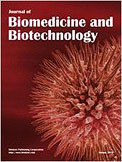Prosecká E, Buzgo M, Rampichová M, Kocourek T, Kochová P, Vysloužilová L, Tvrdík D, Jelínek M, Lukáš D, Amler E. J Biomed Biotechnol. 2012;2012:428503. Epub 2012 Jan 29. IF: 2.436

Department of Biophysics
Abstract
Pulsed laser deposition was proved as a suitable method for hydroxyapatite (HA) coating of coaxial poly-ε-caprolactone/polyvinylalcohol (PCL/PVA) nanofibers. The fibrous morphology of PCL/PVA nanofibers was preserved, if the nanofiber scaffold was coated with thin layers of HA (200 nm and 400 nm). Increasing thickness of HA, however, resulted in a gradual loss of fibrous character. In addition, biomechanical properties were improved after HA deposition on PCL/PVA nanofibers as the value of Young's moduli of elasticity significantly increased. Clearly, thin-layer hydroxyapatite deposition on a nanofiber surface stimulated mesenchymal stem cell viability and their differentiation into osteoblasts. The optimal depth of HA was 800 nm.
